Opinion & Analysis
Statistics that make a great Ryder Cup player and the 2014 U.S. Team standings
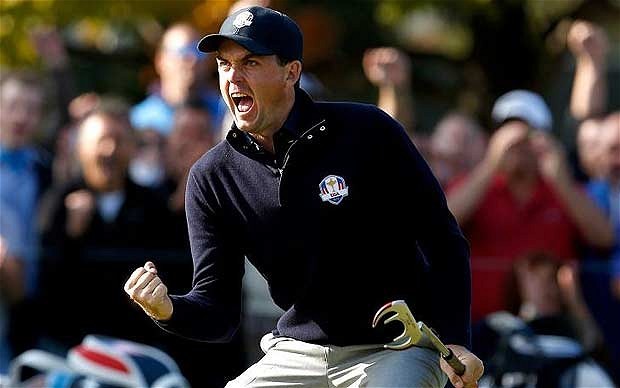
With the Ryder Cup upon us this year, I want to look at the status of the U.S. team from a statistical perspective throughout the season leading up to the event. The U.S. team will have Tom Watson as its captain with four of the 12 members being appointed by Watson. The other eight players will make the team based on points earned.
With that said, what makes for a good Ryder Cup player? This was one of the first things I examined as best as I could since most statistical data prior to 2004 is limited. In the end, I found that there were two player attributes that work very well in the Ryder Cup: a great short game from less than 20 yards around green and good putting.
Look at many of the great all-time Ryder Cup players and they tend to have this common trait: Nick Faldo, Seve Ballesteros, Ian Poulter, Luke Donald, Jose Maria Olazabal, Billy Casper, Larry Nelson, Bernhard Langer and Arnold Palmer. I don’t think anything changes the momentum in a Ryder Cup match than a player who can get his team out of trouble and save crucial pars when the other team thinks it has the hole won.
Great iron play is a player attribute that is a bit less common than a great short game, but there have been plenty of great Ryder Cupper known for their precise iron play. Think of golfers like Colin Montgomerie, Sergio Garcia, Lanny Wadkins and Lee Trevino. They were all great iron players, but they weren’t nearly as good at the other parts of the game.
What makes a good fourball pairing?
Fourball is often referred to as “best ball.” This is where the best score between two players on one team is matched against the best score between two players on the other team. All of the data concludes that the best fourball players make a lot of birdies. This is why Jim Furyk has struggled in the fourball pairings; he typically ranks low on the PGA Tour in birdie percentage.
I feel the best way to pair a fourball team is to look at the players who make a high percentage of birdies, and to pair them up based on their performance on par-3’s, par-4’s and par-5’s. For instance, if both players make a lot of birdies but only play the par-4’s well, they are likely to have difficulty winning the par-3’s and par-5’s. With that said, a captain should value par-4 play the most because there are nearly 2.5 times more par-4’s on the course than the par-3’s or par-5’s.
One of my all-time favorite pairings was J.B. Holmes and Boo Weekley in 2008. Weekley is one of the premier drivers on Tour and would tee off first. He was routinely blasting it 20 yards past Lee Westwood and still finding the fairway. When Weekley would find the fairway, that allowed Holmes to have a free rip at the ball and often times he would hit it 380 yards. If he was playable, he increased his odds of winning the hole outright. If it wasn’t, the steady ball striking of Weekley would still mean that the team had a good chance to win or tie the hole. After the front nine you could see Westwood was visibly frustrated playing the pair.
What make a good foursome pairing?
Foursome play is often referred to as “alternate shot.” Unlike the fourball play, the better players tend to be better at avoiding bogies than making birdies. Historical trends also show that the better foursome format players tend to be very good short game players around the green. Mistakes are going to be made in the foursome format and it helps to have players who can counter those mistakes and end up avoiding bogies.
It is vital for the captain to pair players based on their strengths and weaknesses as well. For instance, a poor pairing would be something like Phil Mickelson and Zach Johnson. Johnson does not play well from the rough and Mickelson struggles to find the fairway. That’s why Johnson and Jason Dufner worked so well at Medinah. Dufner was one of the most effective drivers of the ball in the world at the time, and hit a lot of fairways. That played right into one of Johnson’s strengths of hitting shots from the fairway. And that year Dufner was one of the premier iron players from longer than 150 yards and had a great year with his short game.
Versatility, youth and experience
One of the key components to fielding a team is that the captain should favor player versatility and youth over experience. A captain should look for players who can be effective in both the fourball and foursome formats. If a player struggles badly in the Friday morning foursome matches, the captain may need to sit that player until the Sunday individual matches. And that will require the captain to find a replacement for that player in the Saturday foursome matches. The more versatile the roster is, the more options the captain has and the more the captain can hide the players who are playing poorly.
This leads us to the players who continually make the Ryder Cup based on their experience instead of their performance. We see this every Ryder Cup from the U.S. team. The captain ends up picking a player who usually has a poor Ryder Cup record, but has ample experience. In my opinion, that thinking is tragically flawed because it tells us that the player has experience at underperforming at the Ryder Cup. There are always players who never get that chance at the Ryder Cup, and we are left wondering how they would have performed if they were given the opportunity. But here we have certain players who have been given the opportunity to play in the Ryder Cup and we know that they will perform poorly.
Often times it is not the player’s fault. For instance, Davis Love III caught a lot of flak for making Jim Furyk a captain’s pick. Furyk played brilliantly in all of 2012 and actually played quite well at the Ryder Cup. His playing partner, Brandt Snedeker, played poorly and cost him a match with what was thought of as Europe’s best team in Rory McIlroy and Graeme McDowell. And Furyk was within a small fraction of halving his match with Sergio Garcia. The issue with Furyk is that he is not a versatile player. He is only good for the foursome format and given his age, Love had to limit the matches he could play in order to keep him fresh. So if Furyk came out on fire, the captain can’t use him in the rest of the matches in fear of burning him out.
Here’s a look at the top-12 U.S. players in Ryder Cup points so far (accurate as of 9/10/14), as well as a breakdown of their strengths and potential best pairings.
1. Phil Mickelson
Mickelson’s getting up there in age, but he has developed a game that is more versatile for Ryder Cup play. He is usually best suited for fourball, but with his vast improvement in his putting since working with Dave Stockton he has made himself a much better Foursome player if he is paired with a player who can hit difficult shots out of the rough like Keegan Bradley or Bubba Watson. However, Watson is a weak putter and short game player and would not likely make a good foursome player.
So there are some limitations on what Phil can do given his age and style of play, but he is likely more effective of a Ryder Cup player than any other time in his career. Mickelson’s issues always come down to his driver, but he has actually struck the ball well off the tee so far this year.
2. Jason Dufner
If Dufner regains his 2012 form where he was an elite driver, iron player and short game artist, he is nearly ideal as a Ryder Cup player because he can play in either format with just about any type of player and make their job quite easy. Dufner’s iron play dropped off quite a bit in 2013 and then picked up before the PGA Championship. He’s never been a great putter, but if the rest of his game is like it was in 2012 then Watson should be able to work around it.
3. Dustin Johnson
For a bomber, Johnson is quite versatile because he has shown the ability to perform well in numerous parts of the game. For example, he ranked 12th in short game play in 2013. Johnson is still best suited for fourball given his ability to make birdies, and he performs extremely well on the par-3’s and par-5’s. He is one of those players that could get hot early on and Captain Watson could ride out for the rest of the tournament.
4. Ryan Moore
Moore is ranked 4th because of the start to his 2013-2014 season, as his 2013 season was not overly impressive. He tends to make more birdies than bogeys, and driving is typically the strength of his game. I think he is best suited for the fourball format with a golfer that can really bomb it off the tee and plays the par-3’s well (i.e. Dustin Johnson). I would have Moore tee off first and get his drive out there. If he executes, then let the bomber get a free rip at the ball. I am remain skeptical, however, that Moore can continue this pace and earn a spot on the U.S. team.
5. Harris English
English is only in his 2nd season on Tour so I have limited data on his game. He ranked 17th in Birdie Percentage in 2013, and was very good on the par-4’s and par-5’s. He is also a great putter (14th in Putts Gained in 2013) and a good driver of the ball. His iron play and short game will have to improve this year in order to consider him for the foursome format. For now, he is clearly a favorite for the fourball format and I would probably try to pair him with a strong par-3 and par-4 player (i.e. Dustin Johnson, Jason Dufner, Phil Mickelson, etc).
6. Webb Simpson
Simpson had two very different years in terms of ballstriking in 2012 and 2013. In 2012, he was arguably the best iron player in the world, particularly from the fairway, but he struggled mightily off the tee. In 2013 he drove it fairly well (67th in Driving Effectiveness), but regressed into an above average iron player. He only ranked 77th on iron shots from the fairway.
Meanwhile, his putting and short game remained quite steady, being very good in both areas of the game. He is excellent at the par-3’s, par-4’s and par-5’s and is better at making birdies than bogeys, but ranks well in both categories. This makes for a versatile player, but he is better suited for fourball. I liked his pairing with Bubba Watson in the fourball in 2012, but not in the foursome format. It’s really going to depend on what style of play shows up for Simpson in 2014.
In 2012, the simulations favored Simpson playing with Jason Dufner in the foursome format. If the Ryder Cup was held in 2013, Brandt Snedeker would have been the most favorable partner for Simpson in the foursome format.
7. Jimmy Walker
Walker has been putting extremely well in the 2013-2014 season, which has led to his current ranking in Ryder Cup points. He hits it very long, but he was a mediocre driver of the ball last year (155th in Driving Effectiveness). He was also mediocre on iron shots from the fairway (124th), but excellent from the rough (16th). Walker ranked 26th in both Birdie Percentage and Bogey Avoidance and played the par-4’s and par-5’s very well. This leads me to believe at this moment he is not very versatile as a Ryder Cup player and is mostly suited for the fourball format.
I would pair Walker with a player that can play the par-3’s well like Dustin Johnson or Webb Simpson. If I had to put him in the foursome format, I would look for a long, but effective driver of the ball: someone who can hit it long so that it can make up for Walker’s weak iron play. And a player that has a good enough short game to clean up any of Walker’s misses. Dustin Johnson appears to be an ideal partner in this format.
8. Chris Kirk
Kirk has the makings of a breakout star if he makes the Ryder Cup. Just take a look at these rankings in key metrics in 2013:
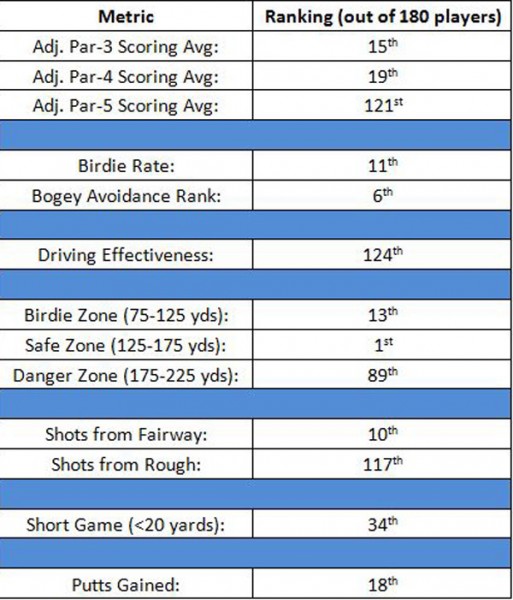
Kirk would be best suited for fourball given his ability on the par-3’s and par-4’s, as well as his ability to make a lot of birdies. He would just need to be paired with a great par-5 player like Bubba Watson, Phil Mickelson, Tiger Woods or Keegan Bradley.
Kirk could fit into the foursome format if he is paired with the right player. He will need a partner who drives it effectively while keeping the ball in the fairway. That will play right into Kirk’s strength of hitting iron shots from the fairway. And the longer and more accurate the golfer, the better it works for Kirk since he is so good from inside 175 yards. My simulations show that Kirk would work nicely with Keegan Bradley, Jordan Speith, Webb Simpson and Kevin Streelman.
9. Jim Furyk
Keep him out of the fourball format and you’re pretty much fine. I would also pair him with an accurate driver of the ball as hitting out of the rough is not one of Furyk’s specialties, as well as a golfer who hits it well from 175-or-more yards given Furyk’s lack of distance off the tee. Zach Johnson would be a nice pairing. The same goes for Jordan Spieth and Steve Stricker.
10. Jason Bohn
Bohn is a longshot to make the team, and is on this list based on his play at the Shriners Hospital For Children Open and OHL Classic at Mayakoba. He also turns 41 years old in April.
His strength has always been his iron play from inside 175 yards, particularly from the fairway. He did rank 35th in Birdie Percentage last year, but ranked 119th in Bogey Avoidance. I think he’s best suited for the fourball format with a partner who makes a lot of birdies, but also does a great job of avoiding bogeys and plays the par-5’s very well. The numbers would favor Bohn being paired with Tiger, Stricker or Keegan Bradley in the fourball format.
In the foursome format, he would probably only work well with Bubba Watson because of Watson’s length and overall effectiveness off the tee. Bohn is an unlikely Ryder Cup candidate, but stranger things have happened.
11. Gary Woodland
Woodland seems to finally be getting his game to click. He’s a power player and was struggling to play towards that strength. However, he is likely relegated towards the fourball format because he is one of the worst short game players on Tour. And despite his power, he has never been a great player on the Par-5’s.
Woodland ranked 27th in Birdie Percentage and 92nd in Bogey Avoidance in 2013. So, he would best off with a high-birdie-rate player who can avoid bogeys and play the par-4’s and par-5’s well in the fourball format. Webb Simpson could be an excellent fit for him. If he were to play in the foursome format, it would be best to stick him with an excellent iron player — particularly from the rough — who can putt well to make up for Woodland’s struggles from around the green. Jordan Spieth, Phil Mickelson and Brandt Snedeker top the list as the most suitable teammate for Woodland in the foursome format.
12. Brian Stuard
Stuard recorded three top-6 finishes in a row and also had a T15 at the Shriners, which has earned him his top-12 ranking thus far. Stuard is 31 years old and not a long hitter, but he drives it effectively off the tee (68th in 2013) and putts pretty decently (79th in Putts Gained in 2013). He’s a very steady, Jim Furyk-type of player who ranked 23rd in Bogey Avoidance and 138th in Birdie Percentage. This means that if he were to make the Ryder Cup, he would fit more into the foursome format and should avoid the fourball format at all costs.
Stuard would be best paired with a good iron player, particularly from the fairway to take advantage of his accurate driving and to avoid his need to scramble (Stuard was 131st in Short Game play in 2013). It would also help to have a partner who can find the fairway off the tee in order to help him with his below average iron play. Therefore, he would fit best with Furyk, Spieth, Tiger or Snedeker at this point in time.
Look for an update, Part 2 of this series, after the 2014 Masters!
- LIKE0
- LEGIT0
- WOW0
- LOL0
- IDHT0
- FLOP0
- OB0
- SHANK0
19th Hole
Vincenzi’s LIV Golf Singapore betting preview: Course specialist ready to thrive once again

After another strong showing in Australia, LIV Golf will head to Sentosa Golf Club in Singapore looking to build off of what was undoubtedly their best event to date.
Sentosa Golf Club sits on the southern tip of Singapore and is one of the most beautiful courses in the world. The course is more than just incredible scenically; it was also rated 55th in Golf Digest’s top-100 courses in 2022-2023 and has been consistently regarded as one of the best courses in Asia. Prior to being part of the LIV rotation, the course hosted the Singapore Open every year since 2005.
Sentosa Golf Club is a par 71 measuring 7,406 yards. The course will require precise ball striking and some length off the tee. It’s possible to go low due to the pristine conditions, but there are also plenty of hazards and difficult spots on the course that can bring double bogey into play in a hurry. The Bermudagrass greens are perfectly manicured, and the course has spent millions on the sub-air system to keep the greens rolling fast. I spoke to Asian Tour player, Travis Smyth, who described the greens as “the best [he’s] ever played.”
Davis Love III, who competed in a Singapore Open in 2019, also gushed over the condition of the golf course.
“I love the greens. They are fabulous,” the 21-time PGA Tour winner said.
Love III also spoke about other aspects of the golf course.
“The greens are great; the fairways are perfect. It is a wonderful course, and it’s tricky off the tee.”
“It’s a long golf course, and you get some long iron shots. It takes somebody hitting it great to hit every green even though they are big.”
As Love III said, the course can be difficult off the tee due to the length of the course and the trouble looming around every corner. It will take a terrific ball striking week to win at Sentosa Golf Club.
In his pre-tournament press conference last season, Phil Mickelson echoed many of the same sentiments.
“To play Sentosa effectively, you’re going to have a lot of shots from 160 to 210, a lot of full 6-, 7-, 8-iron shots, and you need to hit those really well and you need to drive the ball well.”
Golfers who excel from tee to green and can dial in their longer irons will have a massive advantage this week.
Stat Leaders at LIV Golf Adelaide:
Fairways Hit
1.) Louis Oosthuizen
2.) Anirban Lahiri
3.) Jon Rahm
4.) Brendan Steele
5.) Cameron Tringale
Greens in Regulation
1.) Brooks Koepka
2.) Brendan Steele
3.) Dean Burmester
4.) Cameron Tringale
5.) Anirban Lahiri
Birdies Made
1.) Brendan Steele
2.) Dean Burmester
3.) Thomas Pieters
4.) Patrick Reed
5.) Carlos Ortiz
LIV Golf Individual Standings:
1.) Joaquin Niemann
2.) Jon Rahm
3.) Dean Burmester
4.) Louis Oosthuizen
5.) Abraham Ancer
LIV Golf Team Standings:
1.) Crushers
2.) Legion XIII
3.) Torque
4.) Stinger GC
5.) Ripper GC
LIV Golf Singapore Picks
Sergio Garcia +3000 (DraftKings)
Sergio Garcia is no stranger to Sentosa Golf Club. The Spaniard won the Singapore Open in 2018 by five strokes and lost in a playoff at LIV Singapore last year to scorching hot Talor Gooch. Looking at the course setup, it’s no surprise that a player like Sergio has played incredible golf here. He’s long off the tee and is one of the better long iron players in the world when he’s in form. Garcia is also statistically a much better putter on Bermudagrass than he is on other putting surfaces. He’s putt extremely well on Sentosa’s incredibly pure green complexes.
This season, Garcia has two runner-up finishes, both of them being playoff losses. Both El Camaleon and Doral are courses he’s had success at in his career. The Spaniard is a player who plays well at his tracks, and Sentosa is one of them. I believe Sergio will get himself in the mix this week. Hopefully the third time is a charm in Singapore.
Paul Casey +3300 (FanDuel)
Paul Casey is in the midst of one of his best seasons in the five years or so. The results recently have been up and down, but he’s shown that when he’s on a golf course that suits his game, he’s amongst the contenders.
This season, Casey has finishes of T5 (LIV Las Vegas), T2 (LIV Hong Kong), and a 6th at the Singapore Classic on the DP World Tour. At his best, the Englishman is one of the best long iron players in the world, which makes him a strong fit for Sentosa. Despite being in poor form last season, he was able to fire a Sunday 63, which shows he can low here at the course.
It’s been three years since Casey has won a tournament (Omega Dubai Desert Classic in 2021), but he’s been one of the top players on LIV this season and I think he can get it done at some point this season.
Mito Pereira +5000 (Bet365)
Since Mito Pereira’s unfortunate demise at the 2022 PGA Championship, he’s been extremely inconsistent. However, over the past few months, the Chilean has played well on the International Series as well as his most recent LIV start. Mito finished 8th at LIV Adelaide, which was his best LIV finish this season.
Last year, Pereira finished 5th at LIV Singapore, shooting fantastic rounds of 67-66-66. It makes sense why Mito would like Sentosa, as preeminent ball strikers tend to rise to the challenge of the golf course. He’s a great long iron player who is long and straight off the tee.
Mito has some experience playing in Asia and is one of the most talented players on LIV who’s yet to get in the winner’s circle. I have questions about whether or not he can come through once in contention, but if he gets there, I’m happy to roll the dice.
Andy Ogletree +15000 (DraftKings)
Andy Ogletree is a player I expected to have a strong 2024 but struggled early in his first full season on LIV. After failing to crack the top-25 in any LIV event this year, the former U.S. Amateur champion finally figured things out, finished in a tie for 3rd at LIV Adelaide.
Ogletree should be incredible comfortable playing in Singapore. He won the International Series Qatar last year and finished T3 at the International Series Singapore. The 26-year-old was arguably the best player on the Asian Tour in 2023 and has been fantastic in the continent over the past 18 months.
If Ogletree has indeed found form, he looks to be an amazing value at triple-digit odds.
- LIKE1
- LEGIT2
- WOW0
- LOL0
- IDHT0
- FLOP1
- OB0
- SHANK0
Opinion & Analysis
Ryan: Lessons from the worst golf instructor in America

In Tampa, there is a golf course that boasts carts that do not work, a water range, and a group of players none of which have any chance to break 80. The course is overseen by a staff of crusty men who have succeeded at nothing in life but ending up at the worst-run course in America. However, this place is no failure. With several other local courses going out of business — and boasting outstanding greens — the place is booked full.
While I came for the great greens, I stayed to watch our resident instructor; a poor-tempered, method teacher who caters to the hopeless. At first, it was simply hilarious. However, after months of listening and watching, something clicked. I realized I had a front-row seat to the worst golf instructor in America.
Here are some of my key takeaways.
Method Teacher
It is widely accepted that there are three types of golf instructors: system teachers, non-system teachers, and method teachers. Method teachers prescribe the same antidote for each student based on a preamble which teachers can learn in a couple day certification.
Method teaching allows anyone to be certified. This process caters to the lowest caliber instructor, creating the illusion of competency. This empowers these underqualified instructors with the moniker of “certified” to prey on the innocent and uninformed.
The Cult of Stack and Jilt
The Stack and Tilt website proudly boasts, “A golfer swings his hands inward in the backswing as opposed to straight back to 1) create power, similar to a field goal kicker moving his leg in an arc and 2) to promote a swing that is in-to-out, which produces a draw (and eliminates a slice).”
Now, let me tell you something, there is this law of the universe which says “energy can either be created or destroyed,” so either these guys are defying physics or they have no idea what they are taking about. Further, the idea that the first move of the backswing determines impact is conjecture with a splash of utter fantasy.
These are the pontifications of a method — a set of prescriptions applied to everyone with the hope of some success through the placebo effect. It is one thing for a naive student to believe, for a golf instructor to drink and then dispel this Kool-Aid is malpractice.
Fooled by Randomness
In flipping a coin, or even a March Madness bet, there is a 50-50 chance of success. In golf, especially for new players, results are asymmetric. Simply put: Anything can happen. The problem is that when bad instructors work with high handicappers, each and every shot gets its own diagnosis and prescription. Soon the student is overwhelmed.
Now here’s the sinister thing: The overwhelming information is by design. In this case, the coach is not trying to make you better, they are trying to make you reliant on them for information. A quasi Stockholm syndrome of codependency.
Practice
One of the most important scientists of the 20th century was Ivan Pavlov. As you might recall, he found that animals, including humans, could be conditioned into biological responses. In golf, the idea of practice has made millions of hackers salivate that they are one lesson or practice session from “the secret.”
Sunk Cost
The idea for the worst golf instructor is to create control and dependency so that clients ignore the sunk cost of not getting better. Instead, they are held hostage by the idea that they are one lesson or tip away from unlocking their potential.
Cliches
Cliches have the effect of terminating thoughts. However, they are the weapon of choice for this instructor. Add some hyperbole and students actually get no information. As a result, these players couldn’t play golf. When they did, they had no real scheme. With no idea what they are doing, they would descend into a spiral of no idea what to do, bad results, lower confidence, and running back to the lesson tee from more cliches.
The fact is that poor instruction is about conditioning players to become reliant members of your cult. To take away autonomy. To use practice as a form of control. To sell more golf lessons not by making people better but through the guise that without the teacher, the student can never reach their full potential. All under the umbrella of being “certified” (in a 2-day course!) and a melee of cliches.
This of course is not just happening at my muni but is a systemic problem around the country and around the world, the consequences of which are giving people a great reason to stop playing golf. But hey, at least it’s selling a lot of golf balls…
- LIKE6
- LEGIT0
- WOW0
- LOL1
- IDHT0
- FLOP0
- OB0
- SHANK4
19th Hole
Vincenzi’s 2024 Zurich Classic of New Orleans betting preview

The PGA TOUR heads to New Orleans to play the 2023 Zurich Classic of New Orleans. In a welcome change from the usual stroke play, the Zurich Classic is a team event. On Thursday and Saturday, the teams play best ball, and on Friday and Sunday the teams play alternate shot.
TPC Louisiana is a par 72 that measures 7,425 yards. The course features some short par 4s and plenty of water and bunkers, which makes for a lot of exciting risk/reward scenarios for competitors. Pete Dye designed the course in 2004 specifically for the Zurich Classic, although the event didn’t make its debut until 2007 because of Hurricane Katrina.
Coming off of the Masters and a signature event in consecutive weeks, the field this week is a step down, and understandably so. Many of the world’s top players will be using this time to rest after a busy stretch.
However, there are some interesting teams this season with some stars making surprise appearances in the team event. Some notable teams include Patrick Cantlay and Xander Schauffele, Rory McIlroy and Shane Lowry, Collin Morikawa and Kurt Kitayama, Will Zalatoris and Sahith Theegala as well as a few Canadian teams, Nick Taylor and Adam Hadwin and Taylor Pendrith and Corey Conners.
Past Winners at TPC Louisiana
- 2023: Riley/Hardy (-30)
- 2022: Cantlay/Schauffele (-29)
- 2021: Leishman/Smith (-20)
- 2019: Palmer/Rahm (-26)
- 2018: Horschel/Piercy (-22)
- 2017: Blixt/Smith (-27)
2024 Zurich Classic of New Orleans Picks
Tom Hoge/Maverick McNealy +2500 (DraftKings)
Tom Hoge is coming off of a solid T18 finish at the RBC Heritage and finished T13 at last year’s Zurich Classic alongside Harris English.
This season, Hoge is having one of his best years on Tour in terms of Strokes Gained: Approach. In his last 24 rounds, the only player to top him on the category is Scottie Scheffler. Hoge has been solid on Pete Dye designs, ranking 28th in the field over his past 36 rounds.
McNealy is also having a solid season. He’s finished T6 at the Waste Management Phoenix Open and T9 at the PLAYERS Championship. He recently started working with world renowned swing coach, Butch Harmon, and its seemingly paid dividends in 2024.
Keith Mitchell/Joel Dahmen +4000 (DraftKings)
Keith Mitchell is having a fantastic season, finishing in the top-20 of five of his past seven starts on Tour. Most recently, Mitchell finished T14 at the Valero Texas Open and gained a whopping 6.0 strokes off the tee. He finished 6th at last year’s Zurich Classic.
Joel Dahmen is having a resurgent year and has been dialed in with his irons. He also has a T11 finish at the PLAYERS Championship at TPC Sawgrass which is another Pete Dye track. With Mitchell’s length and Dahmen’s ability to put it close with his short irons, the Mitchell/Dahmen combination will be dangerous this week.
Taylor Moore/Matt NeSmith +6500 (DraftKings)
Taylor Moore has quickly developed into one of the more consistent players on Tour. He’s finished in the top-20 in three of his past four starts, including a very impressive showing at The Masters, finishing T20. He’s also finished T4 at this event in consecutive seasons alongside Matt NeSmith.
NeSmith isn’t having a great 2024, but has seemed to elevate his game in this format. He finished T26 at Pete Dye’s TPC Sawgrass, which gives the 30-year-old something to build off of. NeSmith is also a great putter on Bermudagrass, which could help elevate Moore’s ball striking prowess.
- LIKE8
- LEGIT3
- WOW1
- LOL1
- IDHT0
- FLOP3
- OB1
- SHANK2
-

 19th Hole3 weeks ago
19th Hole3 weeks agoDave Portnoy places monstrous outright bet for the 2024 Masters
-

 19th Hole1 week ago
19th Hole1 week agoJustin Thomas on the equipment choice of Scottie Scheffler that he thinks is ‘weird’
-

 19th Hole1 week ago
19th Hole1 week ago‘Absolutely crazy’ – Major champ lays into Patrick Cantlay over his decision on final hole of RBC Heritage
-

 19th Hole2 weeks ago
19th Hole2 weeks agoTwo star names reportedly blanked Jon Rahm all week at the Masters
-

 19th Hole2 weeks ago
19th Hole2 weeks agoReport: LIV Golf identifies latest star name they hope to sign to breakaway tour
-

 19th Hole2 weeks ago
19th Hole2 weeks agoNeal Shipley presser ends in awkward fashion after reporter claims Tiger handed him note on 8th fairway
-

 19th Hole2 weeks ago
19th Hole2 weeks agoBrandel Chamblee has ‘no doubt’ who started the McIlroy/LIV rumor and why
-

 Equipment3 weeks ago
Equipment3 weeks agoWhat we know about Bryson DeChambeau’s 3D-printed Avoda irons



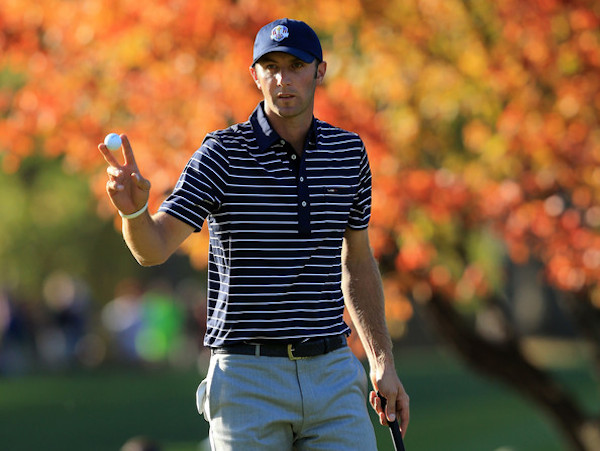

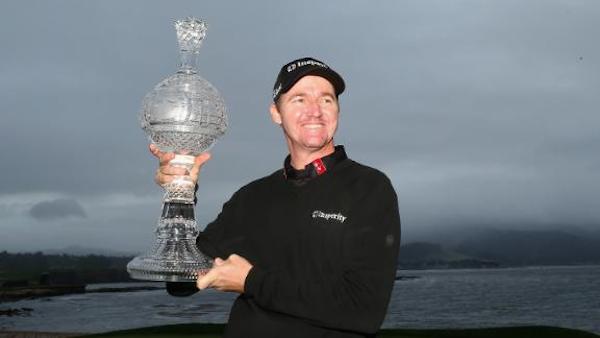
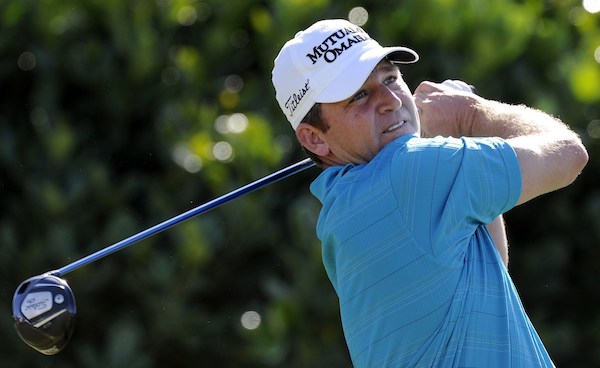
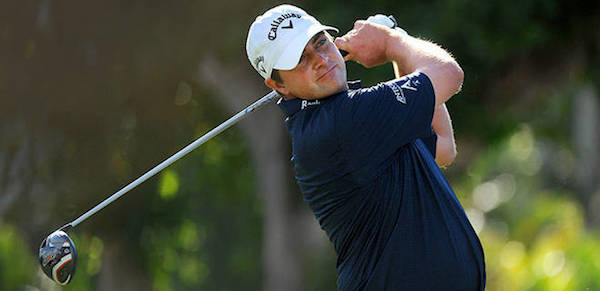


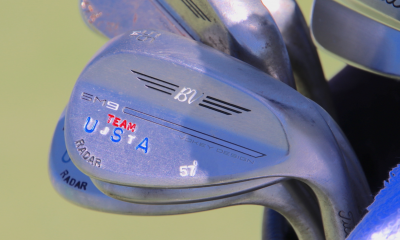

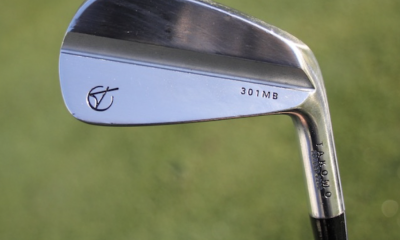

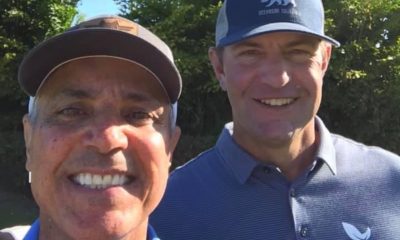













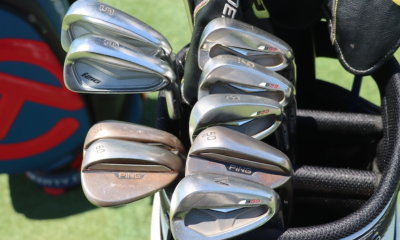

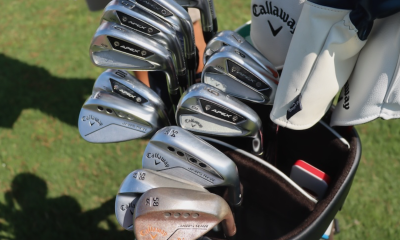





PA PLAYA
Feb 11, 2014 at 5:50 pm
I couldn’t agree more with your thoughts about short game and putting. It has been, and will continue to be, the difference between winning and losing, especially in an event where it’s pretty much a given that just about every player on the team is at the very least a decent ball striker and wedge player.
Absolutely nothing against Ian Poulter, who single handedly turned the momentum against us in that final match Saturday afternoon at Medinah. He was the warrior who rallied the troops that evening, the catalyst for one of the most unbelievable comebacks in European RC history. You take away his ability to putt – he becomes just another run-of-the-mill Ryder Cupper. But those of us who’ve followed him over the past decade, those of us who pull for the Red White and Blue – he’s the one player we least want to see standing over a putt of any significance.
He’s fearless. He’s fearless because he knows that despite giving up 25+ yards off the tee, he can still get the ball into the hole in fewer strokes than his opponents in this event.
Not that team chemistry and all of these other performance aspects aren’t important, but if you don’t have a few great putters on your team who know no fear – you’re probably not going to win very often. It’s tough to find seasoned veterans who aren’t afraid of missing putts, and that pretty much describes all but one US Ryder Cup team over the past 15 years.
Mike H.
Feb 11, 2014 at 11:56 am
Finally someone else that thinks we need youth in the Ryder Cup. The last time the USA won they had a roster full of rookies. Yet we continually are told by the “experts” that you need experience on the team. The only “experience” some of these guys have is the experience of getting beat. It’s time to bring in guys like Spieth, English, and others.
Richie Hunt
Feb 11, 2014 at 3:10 pm
Thanks.
I think with youth the potential is that they may catch lightning in a bottle, much like the Euros did with some of their young players like Sergio and Olazabal. It also helps future teams because a young player may perform exceptionally well at one Ryder Cup and then not qualify for the next Ryder Cup and at least the captain can now consider that player based off their previous performance. Whereas if the young player is never selected, then in the next Ryder Cup it will be difficult for a captain to decipher if he’s worth picking or not.
The Europeans top-20 talent or so is pretty much event with the US top-20 talent. But the US Tour has an entirely deeper talent pool. It’s time that the US team and the people in charge start to try and use that deeper talent pool to their advantage.
IfIfIf
Feb 10, 2014 at 9:15 pm
http://www.youtube.com/watch?v=EnV8kpLotW4
10.00 and onwards….
Richie Hunt
Feb 10, 2014 at 8:23 pm
Thanks. I think the captains need to use statistics to best understand what format best suits the player and what players would likely work best together instead of pairing up players because they are friends. They also need to get every player playing on Day 1 if they can so they can figure out who is hot and who is cold, then ride the hot hands and keep the cold players on the sidelines. I think Furyk could have been a solid career Ryder Cupper if they kept him away from the Fourball format.
Brandel Chamblee
Feb 10, 2014 at 7:44 pm
Nice write up. I’m tired of watching the USA getting pounded by Europe as of late. The Ryder Cup reminds me of the movie miracle because USA puts out the best players even though the margin may be shrinking but we need to start putting out the right players. Pulter is the perfect example because he probably will never win a major but I would never bet against him playing Webb Simpson. USA needs more Keegan Bradley’s and Jordan spieths. I want to see tiger exclamation fist pumps. I love the energy and passion the Ryder cup brings. Furyk and Stricker are great players but I would rather have guys that are not afraid like Ricky fowler and don’t have the scars of previous cups. I love the money ball approach. Please do a follow up closer to the event and look at Europe as well if you can.
Teamer
Jul 9, 2014 at 4:32 pm
Fowler is right on. Corey Pavin thought so. How about his match play success, including Walker cup experience. He has fight and calmness not seen in to many of todays young players.